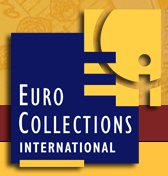
Spain 2009 50€ Cincuentin Silver Proof
2009 marks the 400th anniversary of the first minting of these historic Spanish coins. Known predominately as the Cincuentín and Centén respectively, the 50 Reales silver and 100 Escudos gold coins are among the most impressive and sought-after in Spanish history. The original coins fetch extremely high prices at auction, with an original 100 gold Escudos recently reaching €800,000 at a Barcelona auction, although it was expected to reach somewhere in the vicinity of €2 million. The original coins were minted at the Real Ingenio de Segovia (Segovia Mint), located in central Spain some 90km north-west of Madrid and founded by King Philip II in 1583. Using new minting machines acquired from his cousin Ferdinand II, Archduke of Further Austria, the mint was able to produce circular coins, with almost perfect edges, very unlike the irregular-edged coins that result from the traditional hammer-striking process of the time. Also typical of the time was the habit of having pieces off gold and silver coins, however with the reeding around the edges of these coins prohibiting that from being done without notice, the coins were accepted at face value without the need to be weighed.
The Cincuentín was the name popularly given to silver coins with a face value of 50 reales, weighing approximately 175 grams and measuring about 76 millimetres in diameter, that were struck in the Real Ingenio during the reigns of the monarchs of the House of Austria, namely Philip III, Philip IV and Charles II. On the obverse was the legend with the name of the monarch, followed by the initials "D.G." (Dei Gratia) surrounding the crowned shield and displaying the coats-of-arms of Castile, Leon, Granada, Aragon, Naples and Sicily, Austria, ancient and modern Burgundy, the Brabant, Portugal, Flanders and the Tyrol. These were flanked by the marks of the assayer and of the mint, the Roman aqueduct at Segovia, and the value "50" in Arabic numbers. The reverse portrayed the arms of Castile and Leon surrounded by the Latin text "Hispaniarum rex" and the year of minting.

Spain 2009 100€ Centen Gold-Plated Silver Proof
The Centén was minted during the period of the last monarchs of the House of Austria, namely Philip III, Philip IV and Charles II. It had a face value of 100 escudos, a diameter something in excess of 70 millimetres, and the established theoretical weight was 359.19 grams. It was utilized as a gift for high-ranking members of the European nobility. The pieces minted were therefore scant, and sometimes amounted to only a single piece per minting session. The original coin weighs 335.5 grams and on the obverse depicts the crowned shield with the coats-of-arms of the Spanish territories, the mint marks, represented by an aqueduct, and the assayer’s mark with the entwined initials AR belonging to Andrés de Pedrera, and the face value 100. The reverse shows the Cross Potent of Jerusalem, an honorary entitlement held by the monarchs of Spain since the time of the Emperor Charles V, and proper to the gold coin.
| These two modern issues feature on their reverse full designs taken from the original Spanish coinage. On the obverse are smaller reproductions of the original obverse surrounded with modern elements such as face value, country and year of issue and the logo for the Royal Spanish Mint. The 50 euro silver coin is struck from a massive 168.75 grams of 92.5% sterling silver on a huge 73mm flan, while the 100 euro gold-plated silver proof is struck from 168.88 grams of 92.5% sterling silver on a 73mm flan and coated in fine gold plate. Only 6000 silver and 3000 gold-plated coins have been released to the worldwide market. The coins are both presented in official mint cases with Certificates of Authenticity. |  |





No comments:
Post a Comment